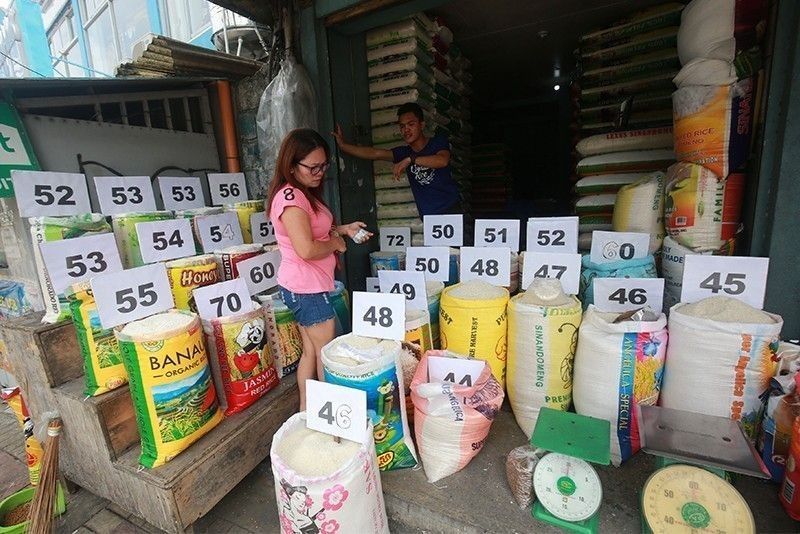Consumers feel benefits of rice liberalization

MANILA, Philippines — Nearly three months since the opening of the rice market, local consumers continue to enjoy lower prices, but farmers remain to be at the losing end.
Latest data from the Philippine Statistics Authority (PSA) showed that prices of Filipinos’ main staple continued to be on the downward trend following arrival of private sector imports.
In its regular update on palay, rice and corn prices, PSA said the average wholesale price of well-milled rice is now at P39.44 per kilogram at the end of May.
This is five percent lower than the P41.30 per kilo level from the same period a year ago.
Its weekly average retail price also decreased by two percent to P43.10 per kilo.
Meanwhile, the wholesale price of regular-milled rice was P35.73 per kilo, nearly one percent below the previous week. Its average retail price was flat at P38.76 per kilo.
While consumers are benefitting from the opening up of the market, local farmers are suffering from declining palay farm gate prices.
The average farm gate price of palay continued to decrease to P18.20 per kilo from the previous week’s level of P18.24 per kilo.
The current price is a 14 percent drop from the P21.08 per kilo last year when the rice liberalization has yet to become a law.
In fact, buying price of palay has dropped to a low of P11 to P13 per kilo in some areas.
The Philippine Chamber of Agriculture and Food Inc. (PCAFI) earlier said the rice tariffication has so far stripped P95 billion in income for farmers as the influx of cheap rice from other countries is pulling down prices.
“At the prevailing price of palay at farm gate which declined by around P5 per kilogram, Filipino farmers are deprived with as much as P95 billion in income. It is based on the country’s local palay production of 19 million metric tons annually,” PCAFI said.
The lower farm gate price is caused by the increased local harvest and is exacerbated by imports flooding the commercial market.
Total rice inventory as of April stood at 2.63 million metric tons (MT), 21 percent higher than last year’s volume stock of 2.18 million MT.
This is also 18 percent up from the previous month’s volume stock of 2.22 million MT.
Under the Rice Tariffication Law, quantitative restrictions on rice importation are lifted and private traders are allowed to import the commodity from countries of their choice.
The Rice Tariffication Law replaced the government’s quantitative restrictions on importation of the staple with a 35 percent tariff.
The measure also created the Rice Competitiveness Enhancement Fund (RCEF) or a special rice buffer fund, with an initial P10-billion annual fund, to ensure rice production competitiveness.
- Latest
- Trending
























